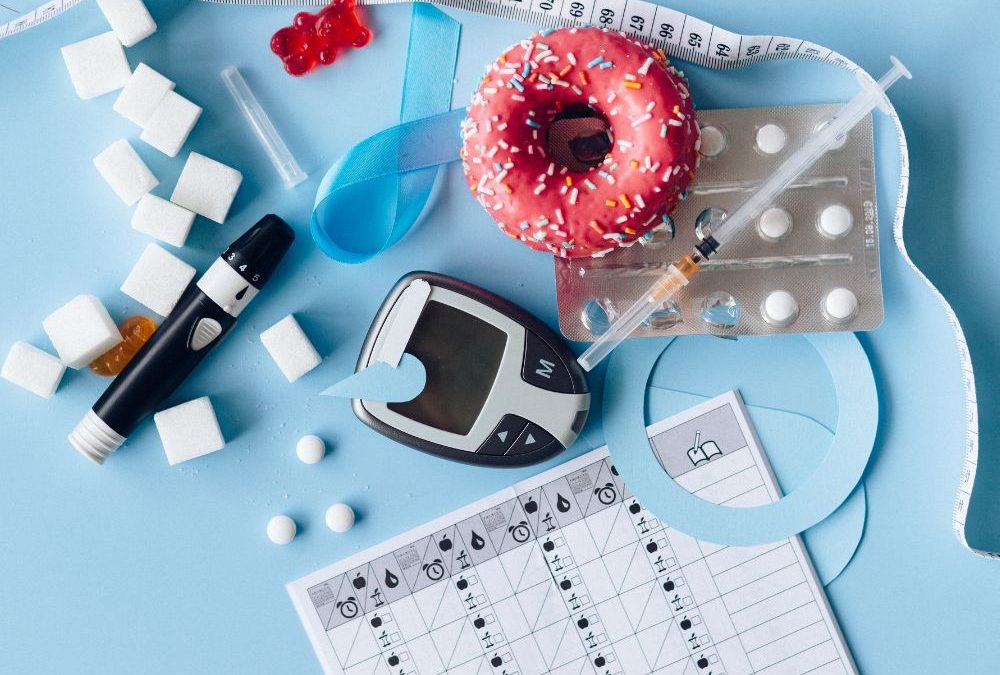Understanding Diabetes: A Comprehensive Overview
Diabetes is a term that most of us have heard, but not everyone understands the depth and breadth of this medical condition that affects millions of people worldwide. In this blog post, we aim to demystify diabetes, delve into its types, causes, symptoms, and the overall implications for affected individuals.
What is Diabetes?
At its core, diabetes is a chronic disease that affects how the body processes blood sugar, or glucose. Glucose is a primary source of energy for the cells in our muscles and tissues, and it’s also the brain’s main fuel source. The regulation of glucose levels in our blood is managed by a hormone called insulin, which is produced by the pancreas.
In diabetes, there’s either a deficiency in insulin production or the body’s cells don’t respond adequately to the insulin that is produced. This leads to high blood sugar levels, which, if left untreated, can cause severe complications, including heart disease, stroke, kidney disease, vision problems, and nerve damage.
Understanding Diabetes
Types of Diabetes
There are mainly three types of diabetes: Type 1, Type 2, and gestational diabetes.
1. Type 1 Diabetes :
– Formerly known as juvenile diabetes, this type often starts in childhood or adolescence but can develop at any age.
– It occurs when the body’s immune system mistakenly attacks and destroys insulin-producing cells in the pancreas, leading to little or no insulin production.
– The exact cause of Type 1 diabetes is unknown, but it’s believed that genetic and environmental factors play a role.
2. Type 2 Diabetes:
– The most common form of diabetes.
– Here, the body either doesn’t produce enough insulin or becomes resistant to its effects.
– Several factors increase the risk of developing Type 2 diabetes, including obesity, physical inactivity, genetics, and poor diet.
– It can occur at any age but is more common in adults. However, due to increased obesity rates among children, Type 2 diabetes in younger populations is rising.
3. Gestational Diabetes:
– This type occurs during pregnancy when the body can’t produce enough insulin to meet the increased needs, leading to high blood sugar levels.
– Gestational diabetes can increase the risk of complications during childbirth and also the future risk of Type 2 diabetes for both mother and child.
There are also other rarer forms of diabetes, such as monogenic diabetes and secondary diabetes, which result from specific genetic mutations or other medical conditions.
Understanding Diabetes
Symptoms of Diabetes
Common symptoms across the types of diabetes include:
– Increased thirst and hunger
– Frequent urination
– Fatigue
– Blurred vision
– Slow-healing wounds
– Unexplained weight loss (especially in Type 1)
– Tingling or numbness in hands or feet
– Darkened skin patches (usually in Type 2)
It’s essential to consult a healthcare professional if you or someone you know experiences these symptoms.
#### **Managing Diabetes**
While there’s no cure for diabetes, it can be managed effectively through a combination of treatments:
– **Medication**: Depending on the type of diabetes, insulin injections, oral medications, or other drugs might be prescribed.
– **Diet**: A balanced diet that emphasizes whole grains, lean proteins, healthy fats, and plenty of vegetables is vital. Monitoring carbohydrate intake is especially important for managing blood sugar levels.
– **Exercise**: Regular physical activity helps increase insulin sensitivity and can aid in maintaining a healthy weight, both crucial for managing diabetes.
– **Regular Monitoring**: Frequent blood sugar checks, usually through finger-prick tests or continuous glucose monitors, help individuals with diabetes maintain their glucose within a target range.
#### **Conclusion**
Diabetes is a complex condition with various causes and types. Early detection and management can reduce the risk of complications and ensure those with the disease live full and active lives. Whether you or someone you know has diabetes or is at risk, it’s essential to stay informed and proactive in managing health. Regular check-ups, maintaining a healthy lifestyle, and adhering to prescribed treatments can go a long way in keeping diabetes under control.











